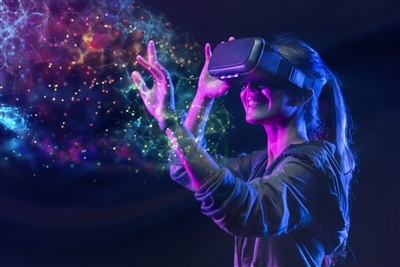Virtual reality - how will it affect education?

The technology around virtuality reality has been in development for decades. I can well recall during the early 90`s queuing up in a video arcade centre to have a go on the latest VR gaming console. The machine was a behemoth, so large you had to climb inside it, strap yourself in, then put on a headset so heavy it made your neck ache.
Disappointment was immediately felt however: the 3d `reality` I was immersed in was so low-resolution and blocky that everything seemed to be made out of lego, and badly. Worst of all though was the lag, the slowness of response when you turned your head to look around, which induced an intense, gut wrenching nausea. Removing the headset and returning to the real world was a blessed relief, though many people complained of feeling sick long afterwards.
During the last three decades much work has gone into improving virtual reality technology, and I believe we are on the cusp of a new age, one in which the methods by which we interact with technology will be vasty altered. The longstanding practices of typing on a keyboard, and watching a fixed screen, may all be about to change. `Augmented Reality` is about to become part of our lives, and may change things in ways that we can hardly imagine.
Augmented Reality can be defined as an interactive experience where the real world environment is enhanced with computer generated features. It is possible for this content to extend upon multiple sensory modalities: visual, auditory, haptic (touch), along with the somatosensory system. What this means is that technology can be used to work alongside and enhance day to day life.
This technology has actually be available, in various limited forms, for some time now. There are applications on phones that can translate printed foreign language in real time. Simply by pointing the device`s camera at the text, the user will see the translation on the screen - it will be as if the street sign, menu, or the page from the novel was written in their native language.
An educational application of virtual reality is simulating certain locations, even ones which no longer exist. History students will be able to see what ancient sites looked like during their heyday, witnessing the ancient pyramids shining white with their outer layer of limestone intact, or observing Stonehenge with its full array of monoliths in-place. They will be able to walk around the colosseum, and even witness a gladiatorial contest from the vantage point of a spectator sitting in one of the terraces. This kind of embodied learning is thought to be far more effective than traditional methods, and one can certainly believe the experience of walking through an ancient landmark would be exciting and instructive.
Along with history, geography is another subject that would benefit from being taught using VR. Students will be able to travel anywhere in the world, from peering into a volcano along the ring of fire, to walking through the streets of any town or city. Being immersed in this didactic environment will enable students to assimilate information in an entirely novel way, retaining it as experiential knowledge, and being more likely to remember it than if they had simply studied it online or with a textbook. One can certainly imagine the experience of visiting Niagara falls or the Grand Canyon to be more memorable than studying it in a removed and abstract manner.
A recent study undertaken by the University of Warwick has indicated that students in the `VR condition also showed better performance for `remembering` than those in the traditional and the video conditions.` Students claimed to have an increase in positive emotions, and a decrease in negative emotions, suggesting that there is a natural congeniality to learning in this manner.
The arts can also benefit from VR teaching. Any gallery, from the Louvre in Paris, to the Hermitage in St Petersburg, could be visited, their entire collections perused, annotations appearing on-screen for the viewer along with audio commentary. Famous sculptures such as Michelangelo`s Pieta to Rodin`s La Penseur shall be available for viewing, and students will even be able to be shown how the workpieces were created.
Perhaps the most exciting potential for VR pedagogy is in medicine. Students will be able to carry out realistic surgical procedures, with the technology tracking out every movement of the scalpel. Haptic technology will accurately replicate the feel of tissue and bone, making this type of hands on learning invaluable for the practice if offers.
Current VR headsets are still rather large and cumbersome, but as time goes on they will certainly become smaller and more comfortable to wear. One imagines they will soon be no larger than a pair of regular spectacles. What`s certain is that VR is going to have a huge impact on education, and we are just witnessing the early stages of a technological revolution that will likely influence much of day to day life.

 Add a Comment
Add a Comment